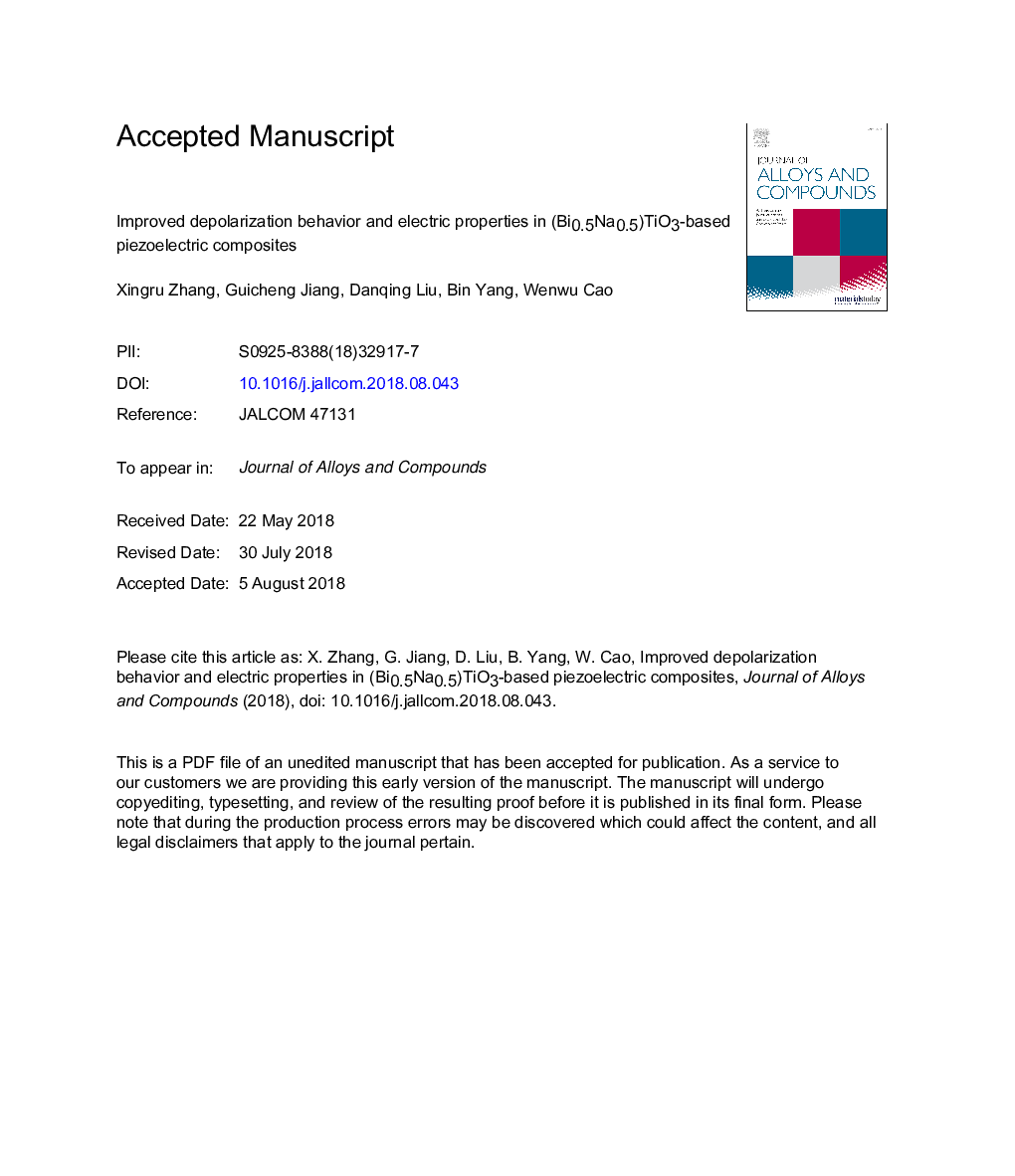| Article ID | Journal | Published Year | Pages | File Type |
|---|---|---|---|---|
| 7990059 | Journal of Alloys and Compounds | 2018 | 28 Pages |
Abstract
(Bi0.5Na0.5)TiO3 (BNT) based ceramics have been restricted by the drawback of the low depolarization temperature Td and ferroelectric-to-relaxor transition temperature TF-R. Many works have confirmed conventional improving strategies like doping and forming solid solution are not efficient to solve the problem. To overcome this obstacle, we introduced semiconductor ZnO into 0.93(Bi0.5Na0.5)TiO3-0.07Ba(Ti0.945 Zr0.055)O3:xZnO matrix to prepare 0-3 type ceramic composites (abbreviated as BNT-BZT:xZnO). Energy disperse spectroscopy (EDS) result reveals that there are two distributions of Zn. Most of Zn2+ ions gather around the boundaries of BNT-BZT grains to form ZnO enrichment regions, and the others diffuse into the lattice. In consideration of the fact that the distribution of Na also appears to be separated, a new model on the Na migration is proposed to explain experimental results. Both the substitution of lower valent Zn2+ ions at B site and the migration of Na are benefit for the formation of oxygen vacancies. As a consequence, the coercive field Ec and mechanical quality factor Qm have been significantly promoted. In terms of depolarization behavior, the temperature-dependent P-E loops show a completely different polarization process after ZnO incorporation. A slower decay of the remnant polarization Pr indicates ferroelectric state is more stable in the composites. The influence of internal bias field on asymmetric P-E loop has been discussed. The experiments on thermally stimulated depolarization current (TSDC) and temperature-dependent dielectric permittivity demonstrate Td and TF-R increase about 17â¯Â°C and 19â¯Â°C, respectively. Our research confirms forming ZnO composites is an effective method to improve depolarization behavior, and BNT-BZT:xZnO composites should be an alternative for application in electromechanical devices.
Keywords
Related Topics
Physical Sciences and Engineering
Materials Science
Metals and Alloys
Authors
Xingru Zhang, Guicheng Jiang, Danqing Liu, Bin Yang, Wenwu Cao,
